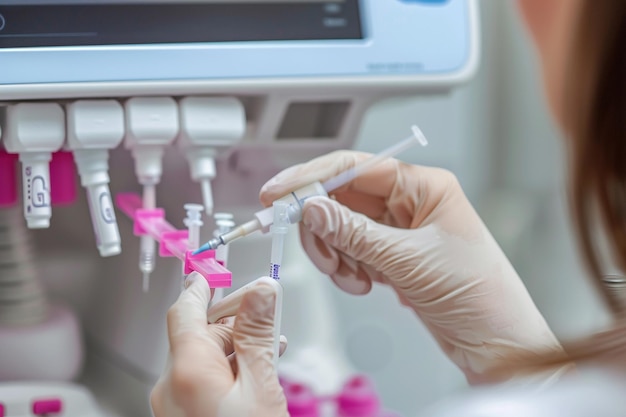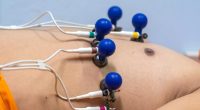In recent years, HER2-Low breast cancer gene testing has garnered attention in the medical field as an essential tool in understanding the genetic underpinnings of breast cancer subtypes. HER2-Low breast cancer, characterized by relatively low levels of the HER2 protein, usually falls between the traditional categories of HER2-negative and HER2-positive statuses. This study, led by Janaina Pontes Batista Cassoli and her team, investigates the frequency and implications of deleterious germline variants in patients exhibiting HER2-Low breast cancer. Utilizing hereditary multipanel gene testing, researchers aimed to uncover genetic mutations that could influence treatment outcomes and provide new insights into the management of this distinct category of breast cancer.
Accruing data from a cohort of 167 breast cancer patients who underwent multi-gene panel testing encompassing up to 145 genes between 2018 and 2019, this study offers an in-depth analysis of the prevalence of pathogenic germline variants. By reclassifying these patients according to their HER2 status and evaluating their clinical characteristics, the study sheds light on the unique genetic landscape of HER2-Low breast cancer. The findings could potentially guide tailored treatment strategies, emphasizing the importance of gene testing in enhancing personalized medicine approaches in oncology.
HER2-Low breast cancer gene testing represents a relatively novel area of exploration within the broader realm of oncological research focused on identifying and treating various subtypes of breast cancer. Traditionally, breast cancer classifications hinge primarily on the presence and level of certain receptors and proteins, with the Human Epidermal Growth Factor Receptor 2 (HER2) being one of the pivotal markers. HER2-positive cancers, characterized by an overexpression of this protein, and HER2-negative cancers, which show low to none, have long been recognized; however, a gap exists between these two categorizations, which is where HER2-Low breast cancer is positioned.
The identification of HER2-Low breast cancer as a distinct category has profound implications for treatment and prognosis. Historically, breast cancer treatments have been closely aligned with the status of HER2, as well as hormone receptors such as estrogen and progesterone. While advanced therapies like Trastuzumab (Herceptin) significantly improve outcomes for HER2-positive patients, those with lower levels of HER2 expression might not derive the same benefit from such targeted therapies. Consequently, HER2-Low breast cancer gene testing has surged in importance, aiding oncologists in fine-tuning treatment protocols that fit the specific genetic profiles of individual tumors.
In dissecting the necessity and relevance of this research conducted by Janaina Pontes Batista Cassoli and colleagues, it is important to understand the emerging landscape of genetic testing in oncology. With advancements in genomic technologies, researchers and clinicians now have the capability to perform comprehensive screenings that can detect an array of genetic mutations associated with varying cancer risks and prognoses. In the case of HER2-Low breast cancer, identifying specific germline variants through hereditary multipanel gene testing could potentially unlock new avenues for targeted interventions that are not solely reliant on the HER2 status but consider a broader genetic context.
The significance of this approach also rests in its potential to segment HER2-Low patients more granularly, providing insights not only into potential risks but also into preventive strategies that could be adopted. As HER2-Low breast cancer gene testing increases our understanding, it equips the medical community with a more nuanced toolkit for addressing the complexities of breast cancer. Furthermore, these findings may encourage the design of clinical trials aimed at examining the efficacy of novel therapies in this specific subset of the breast cancer patient population, thereby expanding treatment options and potentially improving patient outcomes.
By tackling HER2-Low breast cancer with a genetically informed perspective through rigorous gene testing, Cassoli’s study aims to pave the way for more personalized and effective treatment paradigms. This research, thus, is placed at a crucial juncture where precision medicine meets day-to-day therapeutic decisions, making a compelling case for the widespread adoption and integration of HER2-Low breast cancer gene testing in clinical settings for a tailored therapeutic approach.
In the groundbreaking research conducted by Janaina Pontes Batista Cassoli and her team, a rigorous methodology was employed to dissect the role and prevalence of genetic mutations in patients with HER2-Low breast cancer. Central to this investigation was the utilization of HER2-Low breast cancer gene testing, employing a comprehensive multi-gene panel test to gather vital genetic data from a cohort of 167 breast cancer patients.
**Step 1: Patient Selection and Classification**
Patients diagnosed with breast cancer between 2018 and 2019 were selected for the study. These patients underwent clinical reevaluation to determine if their cancer met the criteria for HER2-Low status, which is characterized by an immunohistochemistry (IHC) score of 1+ or an IHC score of 2+ with a negative in situ hybridization result. This reclassification was essential to ensure the specificity of the study population.
**Step 2: Multi-Gene Panel Testing**
The cornerstone of this research’s methodology was the multi-gene panel testing that covered up to 145 genes associated with cancer predisposition. This extensive panel allowed the researchers to perform an in-depth analysis of potential pathogenic or likely pathogenic germline variants. Each patient’s genetic data were meticulously cataloged and analyzed to identify specific gene mutations that are prevalent in HER2-Low breast cancer patients.
**Step 3: Data Analysis**
Following data collection, the subsequent genetic information was analyzed. Statistical analyses were performed to determine the frequency of deleterious mutations among the patient cohort. Researchers also examined correlations between specific mutations and clinical features such as tumor size, grade, and patient age. The identification of genetic patterns contributed to the overall understanding of the genetic landscape specific to HER2-Low breast cancer.
**Step 4: Clinical Implications and Strategy Formulation**
The final phase of the research involved interpreting the genetic testing outcomes to formulate potential clinical interventions. By understanding which mutations were prevalent among the HER2-Low patients, the team proposed tailored therapeutic strategies that could be clinically tested in future trials. This step was crucial in translating genetic information into actionable clinical strategies.
In adopting these meticulous procedures, Cassoli’s study on HER2-Low breast cancer gene testing provides a foundation for comprehending the distinct genetic characteristics of patients with this subtype of breast cancer. The precise and detailed application of advanced genetic testing techniques not only enhances the accuracy of the research findings but also reinforces the potential of personalized medicine in oncology. The implications of such research are immense, paving the way for targeted treatment approaches that transcend conventional HER2 status-centered paradigms and delve into a more nuanced understanding of individual genetic profiles in breast cancer therapy.
The research spearheaded by Janaina Pontes Batista Cassoli that focused on HER2-Low breast cancer gene testing unveiled several crucial findings, shedding light on the genetic intricacies of this specific breast cancer subtype. By utilizing a comprehensive multi-gene panel on a cohort of 167 patients, this study marks a significant advancement in the understanding of genetic underpinnings that could potentially guide more tailored treatment approaches.
One of the primary results from the study indicates that patients with HER2-Low breast cancer harbor a diverse array of pathogenic germline variants, some of which are commonly associated with a higher risk of developing breast cancer. The data revealed that a noticeable percentage of these patients possessed deleterious mutations in genes that are not only associated with breast cancer but also other types of cancers, like ovarian and pancreatic cancers, suggesting a broader spectrum of cancer risk that might require integrated management strategies for these patients.
Importantly, the research found that the most frequently mutated genes in the HER2-Low cohort were BRCA1, BRCA2, and PALB2, genes well-known for their roles in DNA repair mechanisms. The presence of pathogenic mutations in these genes underlines the potential for using PARP inhibitors, a class of drugs that target DNA repair pathways, offering a personalized therapeutic avenue that goes beyond traditional treatments which are typically centered around HER2 protein expression levels alone.
Furthermore, the HER2-Low breast cancer gene testing used in this study allowed for a nuanced analysis of how these genetic mutations correlate with various clinical parameters such as tumor size, grade, and patient age at diagnosis. This correlation analysis revealed that younger patients with higher-grade tumors were more likely to carry significant genetic mutations. This finding emphasizes the need for early genetic screening in certain patient subgroups to potentially initiate more aggressive interventions sooner.
The study also highlighted the importance of reclassifying breast cancer patients according to precise HER2 levels measured via IHC and in situ hybridization. This reclassification, driven by standardized HER2-Low breast cancer gene testing, is vital for ensuring that patients receive the most appropriate genetic counseling and follow-up strategies based on their specific risk profile.
These insights not only pave the way for the adoption of HER2-Low breast cancer gene testing in routine clinical practices but also underscore its value in crafting personalized treatment plans. By identifying patients who might benefit from targeted therapies other than those typically used for HER2-positive or negative cancers, clinicians can optimize treatment efficacy and potentially improve long-term outcomes.
In summation, the research by Janaina Pontes Batista Cassoli has significantly enriched our understanding of the genetic landscape of HER2-Low breast cancer. The key findings from this study underscore the critical role that comprehensive genetic profiling plays in identifying at-risk individuals and tailoring personalized treatment strategies, highlighting the transformative potential of HER2-Low breast cancer gene testing in enhancing patient care in oncology.
The pioneering research led by Janaina Pontes Batista Cassoli on HER2-Low breast cancer gene testing has unveiled critical insights into the intricate genetic framework of this distinctive subtype of breast cancer. By thorough multi-gene panel testing of 167 patients, the study has successfully cataloged a variety of pathogenic gene variants that could significantly influence treatment regimes and patient outcomes. As research progresses, the continual evolution of genetic testing technologies and methodologies promises to deepen our understanding of cancer’s genetic basis, potentially steering the future of oncological therapy towards unprecedented precision.
In moving forward, future research avenues are likely to focus on several pivotal areas. Firstly, larger-scale studies are essential to validate and refine the findings of Cassoli’s study, offering a broader statistical base from which more conclusive deductions can be drawn. Expansion of patient cohorts across diverse populations would also enable the identification of ethnic and genetic diversities influencing treatment outcomes, thereby enhancing the generalizability and clinical utility of HER2-Low breast cancer gene testing.
Moreover, integration with other emerging technologies, such as liquid biopsies for circulating tumor DNA, could further refine patient monitoring and response evaluation. The incorporation of AI and machine learning technologies in analyzing complex datasets from gene panels might also highlight unseen patterns and interactions within genetic information, potentially revealing novel therapeutic targets.
Clinical trials specifically designed around genetic findings from HER2-Low breast cancer gene testing could also significantly impact treatment paradigms. Experimental therapies, particularly those targeting molecular abnormalities dictated by specific genetic alterations identified in the HER2-Low group, could pave new therapeutic pathways. For example, trials exploring the efficacy of PARP inhibitors in HER2-Low patients harboring BRCA mutations could provide deeper insights into personalized treatment effectiveness.
Additionally, considering the psychosocial aspects of genetic testing, further research into patient education and communication regarding HER2-Low breast cancer gene testing is paramount. Ensuring patients understand the implications of genetic findings is critical for informed decision-making and could assist in managing patient expectations and emotional responses to genetic risk assessments.
Finally, policy and guideline development must keep pace with advances in genetics, ensuring that new knowledge is seamlessly integrated into clinical practice. Guidelines that define clear protocols for the use of HER2-Low breast cancer gene testing can aid clinicians in making informed decisions, thereby optimizing patient outcomes based on the latest research insights.
As research in this field advances, HER2-Low breast cancer gene testing is poised to become a cornerstone of personalized oncology, offering tailored treatment that aligns closely with each patient’s genetic profile. With continued exploration and application of these genetic insights, the potential to transform breast cancer treatment and significantly improve patient survival and quality of life is immense. In essence, sustained focus and investment in understanding and applying HER2-Low breast cancer gene testing can lead to more effective and precise oncological interventions, marking a new era in the fight against breast cancer.









